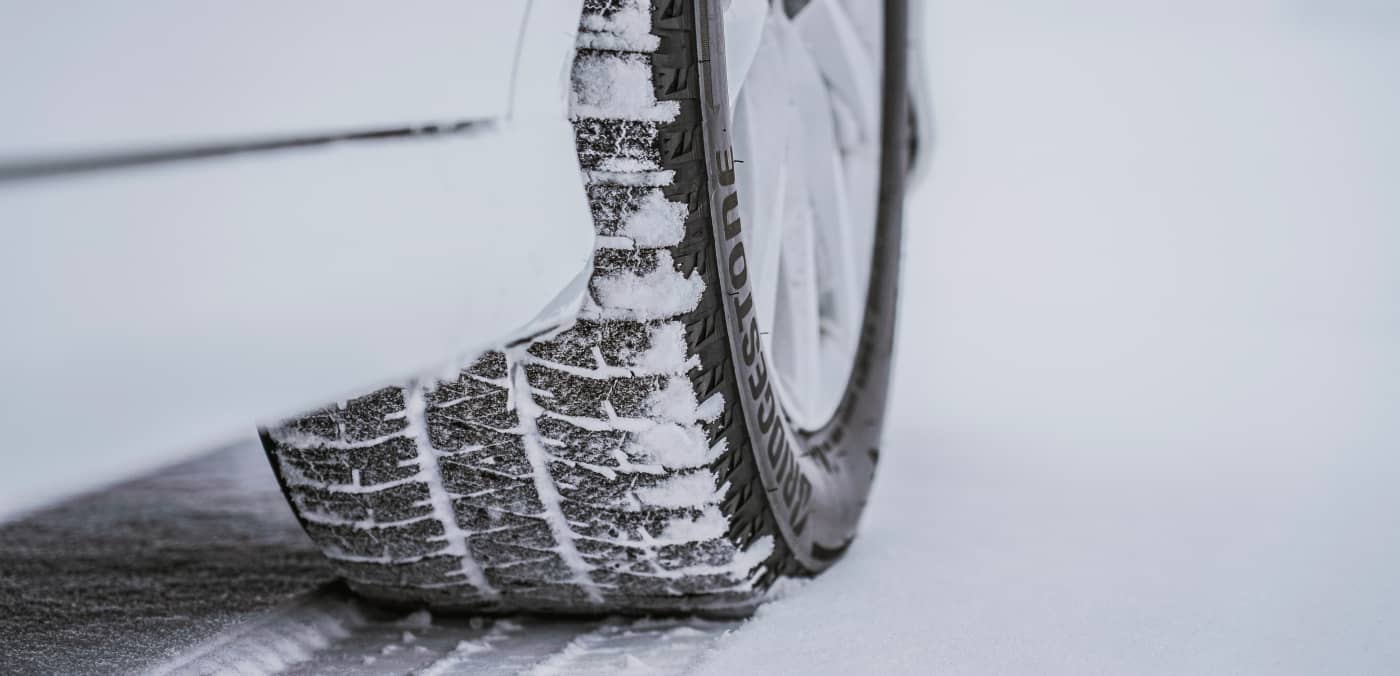

It’s time to get your car winter-ready! With winter upon us, it is crucial to make sure your vehicle can withhold New Jersey’s harsh weather conditions. Though routine maintenance is important year-round, it is especially important during the colder months. The weather has an enormous impact on the functionality of your vehicle. There are several steps to take to insure your car operates successfully to keep you and your loved ones safe during the winter months.

Let’s start off with some tips for driving in the snow:
- Remove All Snow and Ice: Before you clean off the windows, start the car, set the airflow to defrost, the fan speed to maximum, and the temperature to high. Use a brush to remove snow on the vehicle’s roof, hood, trunk lid, and all windows before driving. Use a scraper if necessary, to remove ice on the car windows and mirrors.
- Decrease Speed: Give yourself plenty of distance between vehicles and lower your speed to account for poor traction. Since a vehicle’s tires will slide on snow and ice, gently press down on the brake pedal to stop and gently press down on the accelerator to go. Always keep in mind: bridges and overpasses freeze first.
- Use AWD and 4WD: Driving in snow, sleet and ice can be helped with all-wheel drive or 4-wheel drive. AWD and 4WD help with steering, braking, and general maneuverability on snow, slush, and ice. That extra traction is implied as extra safety!
- Keep a Full Tank of Gas: Typically, in the winter, when your gas tank gets about half empty, fill it up. Keeping gas in the tank is more important in winter than in summer. Why? A full tank reduces condensation, which can prevent gas line freeze-ups. Also, you don’t want to run out of gas if you end up stuck with no way to heat up your car during a snowstorm. Check out our blog post “Why Keep Your Fuel Tank Full Especially in Colder Weather?” for more information!
- Respect Snowplows: Keep your distance from snowplows when driving! The snow that flies off the sides of the plow can hit your windshield making it difficult to see.
- Be on the Lookout for Black Ice: During the day the ice and snow may thaw, but as the temperature drops in the late afternoon or evening, the water may turn to ice on the roadway. This is why it is always important to slow down when driving after a snowstorm.
Winter driving conditions can be hazardous. While it’s important that you are prepared for winter driving, it is also important that your car is up for the challenge. Follow these 12 recommendations below to make sure your car can handle winter road conditions:
1. Inspect Your Tires, Tire Pressure, and Tread
A severely deflated tire can easily result in a blowout if a pothole is hit, leaving you stranded in the cold or worse, in an accident if the roads are slippery. Frequently check the air pressure in each tire. Each 10-degree drop in outside temperature can mean a one-pound loss in air pressure. A sticker on the vehicle’s door jam as well as info in the owner’s manual provides the recommended air pressure. Keep in mind, the best time to inspect tires is when the car has been sitting for 30 minutes or more.
Check tires monthly to determine that each tire is properly inflated and that each has a sufficient amount of tread. If the tread is worn down, you are going to see a diminished performance, stopping distances will be longer on slippery roads, ice, snow.
To determine whether there is enough tread on your tires, take a penny and insert it into one of the grooves between the treads. Lincoln’s head needs to be facing you and his head should be upside down. Do this in 10-15 areas of the tire. If you see all of Lincoln’s head, the tread depth is less than 2/32 of an inch, meaning the tire is dangerous. You must replace your tires. If a portion of Lincoln’s head is not visible, your tire is ok.

Consider installing winter tires when winterizing your car. When the temperature consistently hovers around or below freezing, the rubber compounds in non-winter tires harden, decreasing the tire’s ability to grip the road. Winter tires use special compounds which resist hardening in cold temperatures, providing better traction in ice, snow, slush, and even dry pavement.
2. Inspect the Spare Tire
Don’t be caught this winter with a flat spare tire. Check the air pressure on a monthly basis and carry a portable air compressor.
3. Keep Your Tire Repair Kit Current
Some automakers have replaced the spare tire with a tire repair kit. The kit consists of a small compressor, hose, and a bottle of sticky sealant that is forced through the valve into the tire. Be sure to check the kit’s expiration date and replace it when necessary.
4. Test the Battery
Engines are more difficult to start in cold weather. Remember, batteries hate cold weather. Chemical reactions within the battery make electricity slow down as the temperature drops, making it difficult for it to produce max power. Come down to Luke’s Auto Service in Essex County, NJ and we will check your battery to see if it needs replacement, charging, or cleaning
5. Change the Oil
Cold weather thickens engine oil, making it difficult for parts to turn and the engine to start, putting a strain on the starter and battery. Check the owner’s manual to determine the proper engine oil weight. The basic rule is to use thinner oil for cold weather, thicker in hot weather.
6. Check Brakes
With snow, ice, water, and slush on the highway, the car’s brakes need to be in top operating condition. Do you hear a metal-against-metal noise when the brakes are applied? Is the car pulling to the left or right when the brakes are applied?
While cold weather doesn’t necessarily hurt your brakes, an inspection can ensure the best performance when driving in winter conditions.
7. Invest in New Wiper Blades & Fill Up Washer Fluid
Snow, slush, and salt can quickly build upon the windshield, blinding a driver if the wiper blades are worn out. Streaky and dull wiper blades need to be replaced.
Consider winter wipers. These come equipped with rubber that keeps ice from collecting on the blades. Frequently check the windshield fluid. Use a liquid that does not freeze and keep a gallon of the fluid in the vehicle.
8. Add Proper Coolant
Coolant or antifreeze cools the engine in the winter and summer, preventing overheating and expensive damage to the engine.
If there is insufficient coolant in the system serious engine damage may occur. Always check the owner’s manual to determine when the system must be flushed and what type of coolant should be used. It is recommended to maintain a ratio between 50/50 and 70/30 of antifreeze to water. Our certified technicians would be happy to answer any questions on what antifreeze should be used for your vehicle.
9. Keep Your Rear-Window Defroster in Working Order
When winterizing your car, check your front and rear-window defrosters before cold weather arrives to be sure it’s working properly.
10. Check Belts and Hoses
Belts and hoses need to be checked for cracks and leaks. Cold temperatures weaken these parts causing them to become brittle and fail.
11. Clean Headlights & Taillights
Lights can get quickly covered with snow, ice, and slush. Use a rag, paper towel, or newspaper to clean each light. As a driver, you want to see as far as possible ahead and you want drivers to see you, too.
A headlight’s or taillight’s visibility can be reduced by over 50 percent if the lights are covered with winter grime. Keep extra dry rags in the car for this purpose.
12. Carry Emergency Supplies
Plan for the unexpected. Pack non-perishable food, bottled water, blankets, a flashlight, phone, charger, first-aid kit, air compressor, tire-pressure gauge, a small shovel, jumper cables, extra jacket, boots, and gloves. It’s also a good idea to keep a bag of sand or kitty litter in the car. Place sand or kitty litter under the drive wheels if you get stuck. Straighten the wheels and accelerate slowly.
Do not spin the tires because you likely will dig deeper into the snow!
Getting your car ready for winter means getting your vehicle winterized for cold temperatures, snow, ice, slush, and rain. If you have any questions on how you could winterize your car this year, come down to Luke’s Auto Service in Verona, NJ and we’ll be happy to help you stay safe on the roads!
References:
Images:
